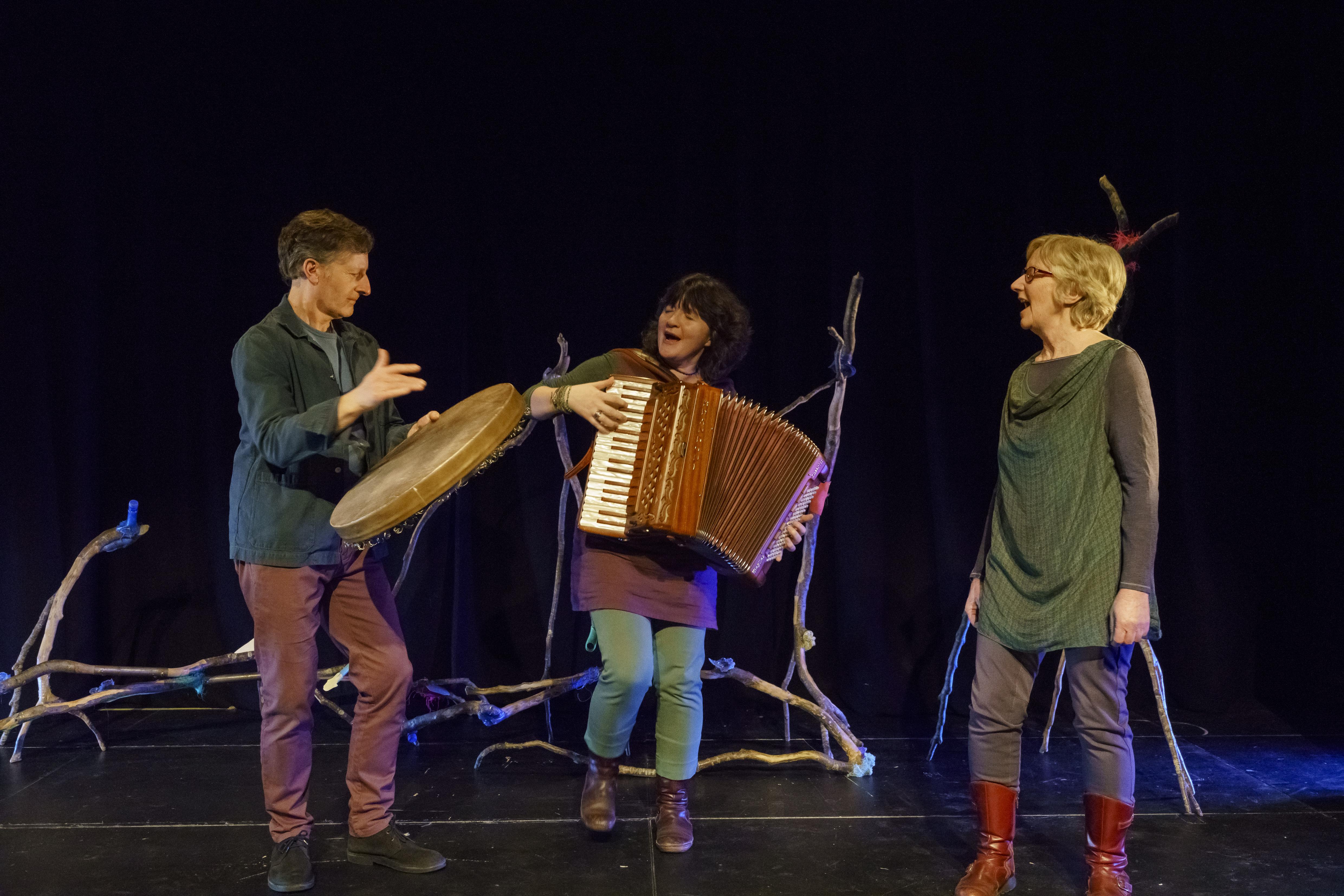More about the music in Dreaming the Night Field
Stacey Blythe and Lynne Denman have sung together in Ffynnon for over 20 years, drawing on harmonic foundations deeply rooted in the traditions of the British isles, blended with the effervescence of jazz and blues influences. These textures are the springboard for Stacey’s evocative, original compositions which provide the distinct and sometimes unsettling aural landscape through which this story of betrayal, revenge, love and honour play out.
Some of the musical ingredients for this piece leapt out from the second we said ‘the Fourth Branch’. The opening song ‘Mae’r ddaear yn glasu/the world is greening’ is a Welsh folk song which evokes the power of nature. For me, it is echoed in the story when Blodeuwedd sees Gronw for the first time, looking out to the woods. Breuddwyd was another must have, a song Lynne wrote, recorded on our 3rd Ffynnon album Adar Gwylltion (Wild Birds). ‘Y Gwydd’ or ‘the wood’, felt perfect for the moment when Gwydion’s magical storytelling casts a spell on the soldiers of Pryderi’s court.
Other elements emerged as we worked. Canu Pwnc is a Welsh chapel tradition of chanting psalms, still practiced in Mynachlugddu in Pembrokeshire. Repetitive and mesmerising, its style influenced our many sung spells of making when substances are magically transformed from one form into another. Each spell is treated differently as the situation in the story is unique each time. A sung phrase from the Black Book of Carmarthen is repeated each time there is a transformation. Poetic forms such as the Englyn, with internal rhyme and alliteration, are also set to original music.
Sometimes music subtly reinforces connections or differences between characters. There’s a blend of original and traditional Welsh harp tunes for Math and Gwydion. Gwydion gets the slip jig; it’s in the same key as Math as they’re related, but Gwydion’s tune is twisty and syncopated. The two tunes weave in and out of each other musically as the characters do, dramatically. My arrangement of Arianrhod’s signature tune is a stately elegant waltz, mirroring her strong independence, established in her own court and life.
There are sections which deliberately push at the edges, causing our ears to seek to resolve dissonance mirroring some of the more uncomfortable elements in the story, which also don’t resolve.
One of our guiding principles has been equality between the three of us – there are times when Lynne takes over the storytelling in song, or when Michael’s drum rhythms drive the action forward, or where I’m changing the landscape with what I play. Just as we experimented with forging iron out of natural materials at Felin Uchaf, so our musical themes and choices manifested as we continued to work with them. Musically I still keep some moments free for improvisation in our live performances which means that the show is utterly unique to each venue.
Stacey Blythe
